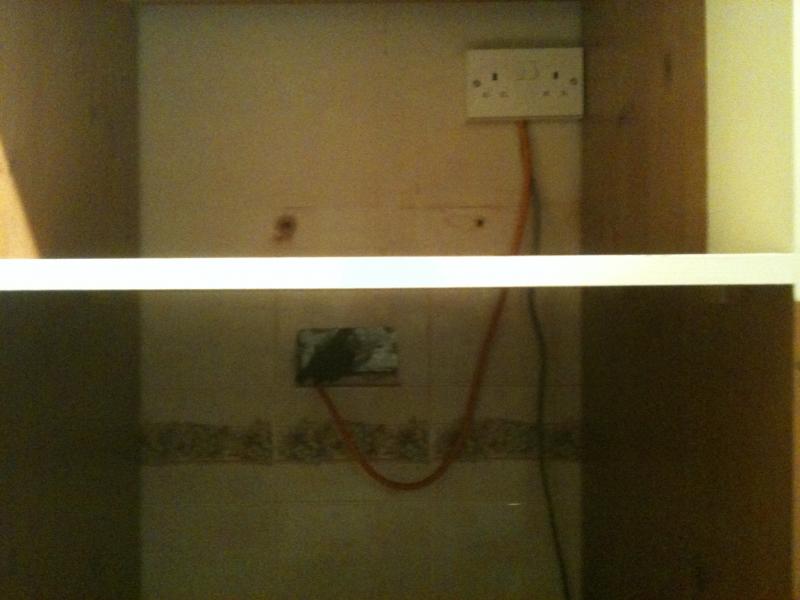I have a new oven, it's a 2.35kw single oven. The manual says it must be hard wired on an all poles isolating switch. This seems a bit over kill for a 2.35kw oven and the old one was wired on a 13amp plug. I could get a 45a switch with 13amp socket for trhe microwave like http://www.screwfix.com/p/45a-sw-13a-skt/17157
The double plug powered the old oven and a microwave, plus had a spur to power the extractor fan. It seems from a quick look at the consumer unit, that the oven plugs are on the same ring as the rest of the downstairs sockets.
Also, on taking out the existing oven the wiring looks a bit suspect. It has been there for a while but I'm wondering if we should get it tidied up. A new double gand plug was fitted above the oven compartment and this was wired from an old double gang box behind the oven using terminal blocks wrapped in electrical tape. You can see in the pic below the top part is the upper shelf where the microwave sat with the new double socket and below the shelf is the oven compartment with the old back box and wiring to the new plug.
Should the terminal blocks be replaced with a J box or something else or it is ok to leave it?
The double plug powered the old oven and a microwave, plus had a spur to power the extractor fan. It seems from a quick look at the consumer unit, that the oven plugs are on the same ring as the rest of the downstairs sockets.
Also, on taking out the existing oven the wiring looks a bit suspect. It has been there for a while but I'm wondering if we should get it tidied up. A new double gand plug was fitted above the oven compartment and this was wired from an old double gang box behind the oven using terminal blocks wrapped in electrical tape. You can see in the pic below the top part is the upper shelf where the microwave sat with the new double socket and below the shelf is the oven compartment with the old back box and wiring to the new plug.
Should the terminal blocks be replaced with a J box or something else or it is ok to leave it?


